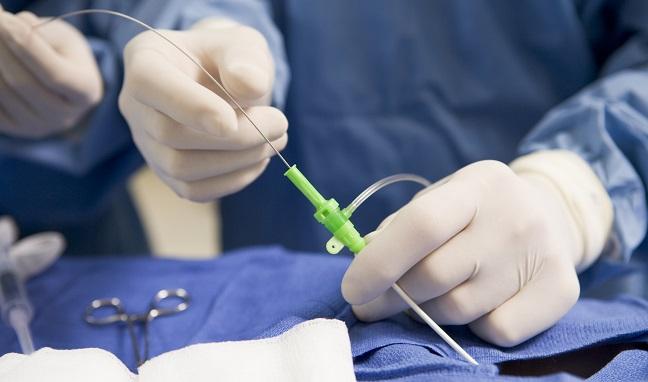Cardiology basics: What your heart doctor actually handles
Cardiology basics: What your heart doctor actually handles
Blog Article
Recognizing the Importance of Cardiology in Modern Health Care Solutions
Cardiology plays an essential duty in modern healthcare, particularly as cardiovascular disease continues to be the leading reason for death worldwide. Developments in diagnostics and therapy have actually transformed patient care, enabling earlier interventions and improved outcomes. Additionally, the shift in the direction of preventive cardiology equips individuals to manage their health proactively. As innovation remains to evolve, the assimilation of innovative solutions may better redefine cardiology's influence on public wellness, motivating a better exam of arising patterns and their implications.
The Prevalence of Heart Problem and Its Effect on Public Health And Wellness
Although heart problem remains the leading reason of fatality worldwide, its impact expands much past private patients to influence public health and wellness systems and economies. The high occurrence of heart disease positions a considerable strain on health care resources, demanding enhanced financing for avoidance, rehabilitation, and treatment programs. Public health and wellness efforts should resolve danger variables such as obesity, cigarette smoking, and sedentary way of lives, which add greatly to the increasing occurrence of heart conditions.Moreover, the economic concern connected with heart problem is enormous, incorporating not just straight clinical prices however likewise indirect expenses associated to shed productivity and premature death. Areas encounter obstacles in managing these expenses, commonly leading to disparities in health care gain access to and outcomes. As the population ages and lifestyle-related dangers proceed to rise, the necessity for effective cardiology interventions becomes extremely important. Attending to heart illness is not just a matter of private health and wellness yet additionally an essential public wellness top priority.
Breakthroughs in Heart Diagnostics and Imaging Techniques
Current improvements in heart diagnostics and imaging methods have transformed the field of cardiology, enhancing the ability to detect and monitor cardiovascular disease. Methods such as heart MRI, CT angiography, and echocardiography have actually come to be increasingly sophisticated, providing detailed pictures of heart structures and functions. These methods permit the early identification of problems like coronary artery illness, cardiac arrest, and valvular disorders.Moreover, advancements in non-invasive diagnostics, such as wearable modern technology and remote tracking devices, have encouraged individuals and healthcare service providers. These devices assist in real-time tracking of heart rhythms and various other essential indications, resulting in prompt interventions. Additionally, expert system is being integrated right into imaging analysis, boosting accuracy and performance in diagnosis.
Innovations in Therapy Options for Heart Issues
Recent innovations in cardiology have brought about significant technologies in treatment choices for heart disease. These consist of innovative surgical strategies that enhance step-by-step end results and emerging drugs that offer new avenues for treatment. As the area progresses, these innovations play a vital function in boosting patient treatment and end results.
Advanced Surgical Techniques
Innovations in surgical strategies have actually transformed the landscape of cardiology, providing brand-new wish for patients with heart conditions. Minimally intrusive treatments, such as catheter-based interventions, have actually greatly decreased healing times and hospital stays. Methods like robotic-assisted surgical treatment boost precision, enabling specialists to browse intricate physiological frameworks with better precision. Advancements in imaging technology help with real-time visualization during procedures, enhancing outcomes. Transcatheter aortic valve replacement (TAVR) exemplifies an innovation in dealing with aortic constriction, making it possible for shutoff substitute without open-heart surgical treatment. Furthermore, hybrid techniques that integrate medical and catheter-based techniques supply tailored services for various cardiac concerns. These advanced medical strategies not just improve client safety yet additionally broaden treatment choices, underscoring the critical duty of technology in contemporary cardiology methods.
Emerging Treatments and medicines
As the landscape of cardiology continues to advance, arising medications and treatments play a pivotal duty in improving treatment alternatives for heart problems. Developments such as unique anticoagulants and advanced lipid-lowering representatives have changed the monitoring of cardio diseases, substantially lowering individual morbidity and mortality. In addition, the development of genetics therapies and regenerative medication offers encouraging opportunities for dealing with conditions formerly deemed incurable. Scientific trials are consistently exposing the efficacy of these therapies, pressing the boundaries of typical treatments. The assimilation of digital health and wellness modern technologies helps with tailored medication, allowing for customized treatment plans based on hereditary and lifestyle aspects. Collectively, these advancements emphasize the dynamic nature of cardiology, improving individual end results and redefining criteria of treatment in modern healthcare.
The Function of Preventive Cardiology in Individual Treatment
Preventative cardiology plays an important function in individual treatment by concentrating on the recognition of risk factors that add to cardiovascular disease. With way of life adjustment methods and very early discovery strategies, doctor can efficiently decrease the incidence of cardio events - Dr Garcia. This positive technique not just enhances client results however additionally promotes long-term wellness
Threat Variable Recognition
While heart diseases remain a leading source of morbidity and death worldwide, efficient danger element identification acts as a keystone of preventative cardiology. Determining danger factors such as high blood pressure, diabetes, hyperlipidemia, and family members background is essential for very early intervention. Healthcare specialists use various evaluating methods to review these variables, enabling for tailored preventative steps. Additionally, recognizing a client's way of living options, such as smoking and physical lack of exercise, even more educates risk analyses. This extensive evaluation allows clinicians to establish personalized treatment strategies focused on mitigating dangers. By focusing on risk variable recognition, healthcare systems can enhance individual end results and reduce the total problem of cardio conditions, eventually adding to enhanced public wellness techniques and source allocation.
Way Of Life Alteration Strategies
A wide range of research studies highlights the vital function of way of living modification techniques in minimizing heart disease risk. These methods encompass nutritional changes, enhanced physical task, smoking cigarettes cessation, and weight monitoring. By adopting a heart-healthy diet rich in fruits, veggies, whole grains, and lean proteins, individuals can reduce cholesterol degrees and high blood pressure. Normal exercise reinforces the heart and boosts total cardiovascular health. Additionally, quitting smoking significantly decreases the danger of heart illness and enhances recovery rates for those with status quo. Weight monitoring better adds to cardio wellness by minimizing various other threat variables such as diabetes mellitus and high blood pressure. Carrying out these way of life alters not only promotes individual health yet likewise serves as a keystone of preventative cardiology in individual care.
Early Detection Strategies
Way More about the author of life adjustments significantly add to lowering cardiovascular disease threats, yet they are most efficient when coupled with early discovery methods. Preventive cardiology stresses the importance of identifying possible heart problems before they rise into serious problems. Techniques such as blood pressure tracking, cholesterol testing, and progressed imaging technologies like echocardiograms play critical functions in evaluating cardio health. Biomarkers and genetic testing additionally enhance the accuracy of early discovery, permitting customized preventive methods. Normal heart threat examinations encourage health care providers to step in proactively, potentially stopping cardiovascular disease and strokes (Dr Garcia). By integrating these very early detection techniques right into regular care, individuals can take advantage of timely way of life treatments and targeted treatments, eventually boosting outcomes and improving lifestyle
Integrating Modern Technology Into Cardiology Practices
As developments in technology remain to reshape different fields, the combination of innovative tools and systems right into cardiology techniques has ended up being essential for enhancing individual care and end results. Telemedicine systems allow cardiologists to check patients remotely, improving accessibility to care while minimizing the worry on healthcare facilities. Wearable devices, such as smartwatches, enable continuous heart rate tracking, signaling both people and physicians to potential issues in real-time. Additionally, expert article source system (AI) is being used to assess substantial quantities of heart information, helping in early diagnosis and customized treatment plans. Advanced imaging techniques, consisting of 3D echocardiography, boost visualization of heart frameworks, causing a lot more exact interventions. Electronic health documents (EHRs) simplify individual info administration, ensuring that cardiologists have prompt accessibility to vital data. Together, these technical improvements are transforming cardiology, advertising aggressive administration and improved wellness outcomes for clients with cardiovascular problems.
The Value of Client Education And Learning and Interaction
Patient education and learning and engagement play an essential role in the administration of cardiovascular health and wellness. By equipping individuals with understanding about their conditions, therapy options, and way of life changes, healthcare carriers empower people to take an energetic function in their treatment. This proactive method can bring about improved adherence to recommended drugs, nutritional changes, and workout regimens, inevitably decreasing the danger of complications.Engagement additionally fosters a strong patient-provider connection, urging open communication and count on. When individuals really feel educated and included, they are more probable to voice issues and ask concerns, which can cause far better clinical outcomes. Additionally, academic sources, such as workshops or electronic systems, can improve understanding and advertise self-management approaches. On the whole, focusing on patient education and engagement is important for improving cardio health and wellness, enhancing top quality of life, and lowering medical care prices connected with heart diseases.
Future Trends in Cardiology and Their Potential Impact

Often Asked Questions
What Lifestyle Adjustments Can Minimize Heart Illness Danger?
The existing question addresses way of life adjustments that can considerably reduce cardiovascular disease threat. Dr Garcia. Taking on a well balanced diet, participating in normal exercise, maintaining a healthy and balanced weight, handling tension, and avoiding cigarette can significantly improve cardio health and wellness
How Can I Identify Early Indicators of Heart Issues?
Recognizing very early indications of heart issues involves surveillance symptoms such as upper body pain, lack of breath, fatigue, and uneven heart beat. Prompt awareness of these indicators can motivate needed clinical assessment and treatment for much better end results.
What Are the Differences In Between Cardiologists and Heart Surgeons?
The differences in between cardiologists and cardiac doctors hinge on their functions; cardiologists primarily manage and identify heart disease through non-invasive approaches, while heart cosmetic surgeons execute procedures to deal with structural heart problems. Each plays an essential, distinct role.

Exactly how Commonly Should I Get My Heart Health Checked?
The frequency of heart checkup differs based on individual threat variables. Usually, grownups ought to undergo analyses every one to two years, while those with status quo may call for more frequent analyses as recommended by healthcare specialists.
What Function Does Genetics Play in Heart Problem Danger?
Genetics considerably influences cardiovascular disease danger, with familial patterns showing acquired conditions. Specific genetics can predispose people to hypertension, cholesterol problems, and other cardio problems, highlighting the value of genetic testing in assessing heart wellness. Heart illness continues to be the leading cause of fatality worldwide, its influence extends much beyond private people to impact public wellness systems and economies. Public wellness initiatives need to address danger variables such as obesity, cigarette smoking, and sedentary way of lives, which add greatly to the increasing occurrence of heart conditions.Moreover, the economic concern linked with heart disease is enormous, incorporating not just direct medical expenses yet also indirect costs related to lost performance and premature death. Preventative cardiology plays an essential function in person care by focusing on the identification of danger variables that add to heart disease. Synthetic intelligence (AI) and maker understanding are enhancing diagnostics and client monitoring, enabling very early detection of heart illness. The distinctions between cardiologists and cardiac surgeons lie in their functions; cardiologists mostly take care of and detect heart problems via non-invasive approaches, while heart doctors execute medical treatments to remedy architectural heart issues.
Report this page